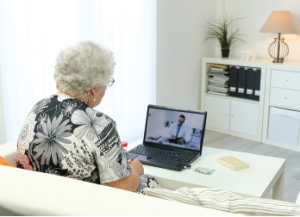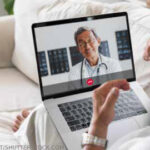
JP WALLET / shutterstock.com
ATLANTA—With growing demand for access to rheumatologists in rural areas, a shortage in the number of rheumatologists and the ability to use technology as a bridge to patients in remote areas, telemedicine seems like a smart option.
And it certainly can be, experts said at a 2019 ACR/ARP Annual Meeting session in November. But a plunge into telehealth takes full commitment, proper training and staying attuned to patient needs and input, they stressed.
The University of Pittsburgh has five telehealth locations in remote spots in western and central Pennsylvania. Christine Peoples, MD, clinical assistant professor of medicine and director of the University of Pittsburgh Medical Center (UPMC) Rheumatology Telemedicine Program, calls telemedicine “my passion for six years.” From January 2016 to December 2018, the center conducted 1,533 telemedicine rheumatology visits involving 535 unique patients and 442 of those new visits. The telemedicine volume has been increasing month after month, she indicated.
For an appointment, patients or providers can contact the main scheduling office, the local teleconsult office in their area or the office where Dr. Peoples works.
“It’s pretty easy to contact us about getting scheduled,” she said. Patients are told it’s a telemedicine visit and not an in-person visit and that they should check with their insurance plan about coverage. Then the local telehealth center calls to confirm with the patient that it will be a tele-visit and to explain what the visit will involve. The program’s website includes information about what to expect.
Outreach to Local Providers
Dr. Peoples has made it a point to reach out to local providers so they know the telehealth program exists.
“That’s really been successful because I can develop relationships with local physicians and providers outside our UPMC system,” she said.
Another important element, she said, is taking patient satisfaction feedback to heart.
“This is something we really home in on, on a regular basis,” she said. “We really take that seriously to try to make changes.”
All in all, patients seem exceedingly happy with the service—across all the centers. When asked how satisfied they were with the visit, patients gave perfect or nearly perfect scores on average.
Dr. Peoples underscored the importance of the physical exam in the visits, which are done by nurses at the local site. “I personally trained the tele-presenting nurses at all these locations,” she said.
Having a good “computer-side manner” is also vital, Dr. Peoples stated. During telehealth visits, from her distance, she explains to patients how the cameras are used, ensures the images are kept private and explains the mechanics of the visit, such as telling the patient when, from her remote location, she is seeing a zoomed-in shot of their wrist on her screen. And she tries to speak “face to face,” granted by way of screens.



